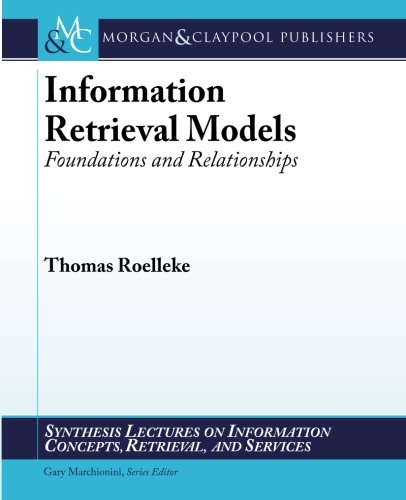

Most ebook files are in PDF format, so you can easily read them using various software such as Foxit Reader or directly on the Google Chrome browser.
Some ebook files are released by publishers in other formats such as .awz, .mobi, .epub, .fb2, etc. You may need to install specific software to read these formats on mobile/PC, such as Calibre.
Please read the tutorial at this link: https://ebookbell.com/faq
We offer FREE conversion to the popular formats you request; however, this may take some time. Therefore, right after payment, please email us, and we will try to provide the service as quickly as possible.
For some exceptional file formats or broken links (if any), please refrain from opening any disputes. Instead, email us first, and we will try to assist within a maximum of 6 hours.
EbookBell Team

0.0
0 reviewsInformation Retrieval (IR) models are a core component of IR research and IR systems. The past decade brought a consolidation of the family of IR models, which by 2000 consisted of relatively isolated views on TF-IDF (Term-Frequency times Inverse-Document-Frequency) as the weighting scheme in the vector-space model (VSM), the probabilistic relevance framework (PRF), the binary independence retrieval (BIR) model, BM25 (Best-Match Version 25, the main instantiation of the PRF/BIR), and language modelling (LM). Also, the early 2000s saw the arrival of divergence from randomness (DFR).
Regarding intuition and simplicity, though LM is clear from a probabilistic point of view, several people stated: "It is easy to understand TF-IDF and BM25. For LM, however, we understand the math, but we do not fully understand why it works."
This book takes a horizontal approach gathering the foundations of TF-IDF, PRF, BIR, Poisson, BM25, LM, probabilistic inference networks (PIN's), and divergence-based models. The aim is to create a consolidated and balanced view on the main models.
A particular focus of this book is on the "relationships between models." This includes an overview over the main frameworks (PRF, logical IR, VSM, generalized VSM) and a pairing of TF-IDF with other models. It becomes evident that TF-IDF and LM measure the same, namely the dependence (overlap) between document and query. The Poisson probability helps to establish probabilistic, non-heuristic roots for TF-IDF, and the Poisson parameter, average term frequency, is a binding link between several retrieval models and model parameters.
Table of Contents: List of Figures / Preface / Acknowledgments / Introduction / Foundations of IR Models / Relationships Between IR Models / Summary & Research Outlook / Bibliography / Author's Biography / Index